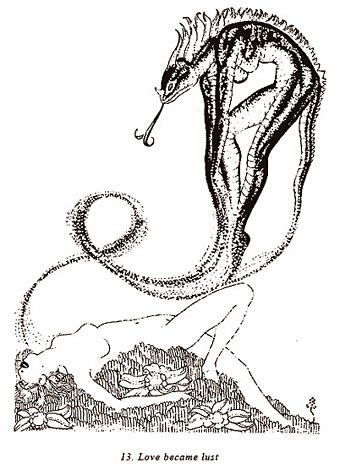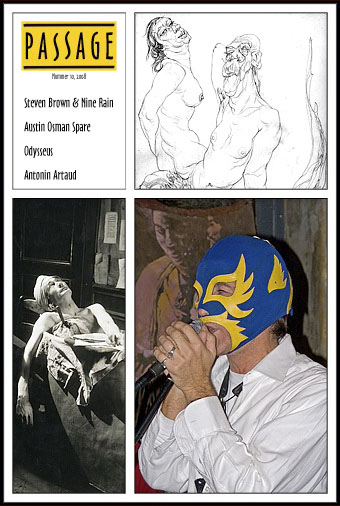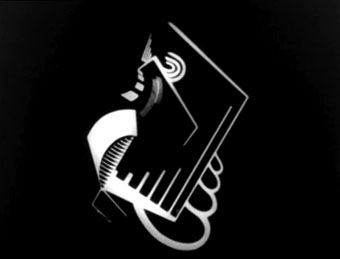A revolution in the boardroom
| Why it pays to be gay.
Month: August 2008
The art of Mahlon Blaine, 1894–1969
Nova Venus (1938).
I doubt that illustrator Mahlon Blaine featured in any of the scurrilous porn books in Franz Kafka’s collection—he would have been too young, for a start—but his erotic work isn’t so far removed from some of the artists of The Amethyst and Opals. As usual with obscure talents of this period it’s good to know that someone has already done the required legwork in assembling biographical details. The always reliable Bud Plant has a page about Mahlon Blaine’s life and work, and there’s also a website, The Outlandish Art of Mahlon Blaine. Blaine’s quality control is variable but there’s a trace of the usual suspects in many of these drawings, notably Harry Clarke and, occasionally, the etiolated shade of the Divine Aubrey. (Beardsley, to you.) Similarities too to contemporaries such as Wallace Smith and John Austen, both of whom owe a debt to Clarke and Beardsley. The drawing above comes from this gallery which is among the better sets available.
Elsewhere on { feuilleton }
• The illustrators archive
Previously on { feuilleton }
• Kafka’s porn unveiled
Passage 10
My good friend Ed Jansen writes to inform me that a new edition of his web (and occasionally, print) magazine Passage has appeared. Contents can be seen above: musician Steven Brown, a member of the excellent Tuxedomoon with a separate solo career; artist and occultist Austin Osman Spare who’s been featured here several times; mythical hero Odysseus and playwright, poet and actor, Antonin Artaud. Since Ed is Dutch, the contents are also largely in Dutch but at { feuilleton } we try to be at least occasionally international. The Steven Brown section includes some English language material and the magazine is worth a look for the pictures, especially the Spare work which includes a number of examples I haven’t seen before. Once again I can’t help think that Spare is long overdue a serious monograph from the likes of Thames & Hudson.
Elsewhere on { feuilleton }
• The illustrators archive
Previously on { feuilleton }
• Austin Spare’s Behind the Veil
• Another playlist for Halloween
• Austin Osman Spare
Symphonie Diagonale by Viking Eggeling
This early piece of abstract cinema from 1924 is available for viewing in several locations—YouTube and Ubuweb have copies—but the best version can be seen at Europa Film Treasures. The film was originally silent so don’t feel too bad about watching with the sound off or with your own score to replace those which were added later.
Born in Sweden to a family of German origin, Viking Eggeling emigrated to Germany at the age of 17, where he became a bookkeeper, and studied art history as well as painting. From 1911 to 1915 he lived in Paris, then moved to Switzerland at the outbreak of World War I. In Zurich he became a associated with the Dada movement, became a friend of Hans Richter, Jean Arp, Tristan Tzara, and Marcel Janco. With the end of the Great War he moved to Germany with Richter where both explored the depiction of movement, first in scroll drawings and then on film. In 1922 Eggeling bought a motion picture camera, and working without Richter, sought to create a new kind of cinema. Axel Olson, a young Swedish painter, wrote to his parents in 1922 that Eggeling was working to “evolve a musical-cubistic style of film—completely divorced from the naturalistic style.” In 1923 he showed a now lost, 10 minute film based on an earlier scroll titled Horizontal-vertical Orchestra. In the summer of 1923 he began work on Symphonie Diagonale. Paper cut-outs and then tin foil figures were photographed a frame at a time. Completed in 1924, the film was shown for the first time (privately) on November 5. On May 3, 1925 it was presented to the public in Germany; sixteen days later Eggeling died in Berlin. For more on Eggeling see the book Viking Eggeling 1880–1925 by Louise O’Konor.
Elsewhere on { feuilleton }
• The abstract cinema archive
Together Again in Different Time Zones
Together Again in Different Time Zones
| David Byrne & Brian Eno.



